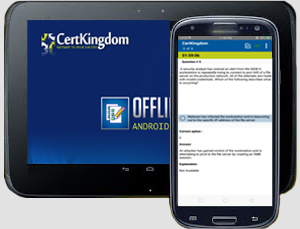Exam: 1Z0-1195-25

|
|||||||||||||||||||||||||||
1Z0-1195-25 Oracle Data Platform 2025 Foundations Associate Exam
Earn associated certifications
Passing this exam is required to earn these certifications. Select each
certification title below to view full requirements.
Oracle Data Platform 2025 Certified Foundations Associate
Format: Multiple Choice
Duration: 60 Minutes
Exam Price: Free
Number of Questions: 40
Passing Score: 65%
Validation: This Exam has been validated against Oracle Cloud Infrastructure
2025
Policy: Cloud Recertification
Prepare to pass exam: 1Z0-1195-25
Oracle Data Platform 2025 Foundations Associate certification is intended
for individuals looking to demonstrate fundamental knowledge of data management
services provided by Oracle. This certification is targeted towards candidates
with non-technical backgrounds such as those involved in selling or procuring
cloud solutions, as well as those with a technical background who want to
validate their foundational-level knowledge around core Oracle Data Management
services. This exam does not require any hands-on technical experience and is
not a prerequisite for taking any other Oracle certifications
Take recommended training
Complete one of the courses below to prepare for your exam (optional):
Become an Oracle Data Platform Foundations Associate - 2025
Additional Preparation and Information
A combination of Oracle training and hands-on experience (attained via labs
and/or field experience), in the learning subscription, provides the best
preparation for passing the exam.
Review exam topics
The following table lists the exam objectives and their weightings.
Objectives % of Exam
Data Management Introduction 11%
Autonomous Database and Tools 16%
Exadata and DBCS 11%
MySQL and NoSQL 10%
Converged Database 7%
Resiliency 9%
Developing on Oracle Database 13%
Data Lake, Data Warehouse and Machine Learning 15%
Upgrades and Migrations 8%
Data Management Introduction
Explain Oracle's Data Management Strategy
Discuss the different Oracle database offerings and deployment options
Discuss multi-cloud and hybrid cloud options for managing data using Oracle
Cloud
Autonomous Database and Tools
Explain Autonomous Database, the various offerings and deployment options
Create an ADB Instance - provision, scale CPU and storage, start and stop
Describe ADB Tools and load data into ADB
Exadata and DBCS
Explain the various Exadata deployment options
Discuss Lifecycle Management (patching, backup & recovery)
Discuss Oracle Base Database Service
MySQL and NoSQL
Describe MySQL HeatWave Database Service
Describe NoSQL Service
Converged Database
Describe multi-model and converged database use cases
Explain json, graph and spatial in the Oracle Database
Resiliency
Explain Oracle's Maximum Security Architecture
Explain Oracle's Maximum Availability Architecture
Developing on Oracle Database
Explain the processes and concepts to manage Autonomous Database: REST, APIs
Describe Oracle's Data Toolset
Describe low-code APEX
Describe Oracle Database CI/CD in Database Tools and APEX
Data Lake, Data Warehouse and Machine Learning
Describe the Data Lakehouse on OCI
Define Oracle Machine Learning
Explain the Data Mesh architecture
Upgrades and Migrations
Describe various migration strategies to the cloud
Explain Oracle's upgrade options
1Z0-1195-25 Brain Dumps Exam + Online / Offline and Android Testing Engine & 4500+ other exams included
$50 - $25 (you save $25)
Buy Now
QUESTION 1
Supply Side is data that is passive and means something. What two models and
libraries are included in the supply side?
A. Business rules
B. Domain objects
C. Technical definitions of business terms
D. Reports
Answer: A, B
Explanation:
In the Oracle Data Platform, the "Supply Side" refers to foundational data
elements that are passively
collected and structured to provide meaning within the data ecosystem. According
to Oracle's official
documentation, the supply side includes "Business rules" (A), which define the
logic and policies
governing data usage, ensuring consistency and compliance, and "Domain objects"
(B), which
represent structured entities or concepts within a business domain, forming the
backbone of data
modeling. "Technical definitions of business terms" (C) pertain to metadata
management, and
"Reports" (D) are outputs rather than core supply-side models. Oracle's Data
Platform Foundations
emphasize business rules and domain objects as key components of the supply side
for data integration and processing.
Reference: Oracle Data Platform 2025 Foundations Associate documentation,
Section on Data Supply Side Models.
QUESTION 2
What does ORDS stand for?
A. Oracle REST Data Services
B. Oracle Resilient Data Security
C. Oracle Rapid Data Systems
D. Oracle REAP Diagnosis Systems
Answer: A
Explanation:
ORDS stands for "Oracle REST Data Services," a middleware component provided by
Oracle to enable
RESTful access to Oracle Database and related services. It allows developers to
expose SQL queries,
database objects, and stored procedures as REST APIs, facilitating integration
with modern
applications. Options B ("Oracle Resilient Data Security"), C ("Oracle Rapid
Data Systems"), and D
("Oracle REAP Diagnosis Systems") are not recognized terms in Oracle's official
documentation. ORDS
is extensively documented in Oracle's cloud and database resources as a critical
tool for RESTful
services, particularly in environments like Autonomous Database and Oracle Cloud
Infrastructure (OCI).
Reference: Oracle REST Data Services Documentation, Oracle Cloud Infrastructure
Data Integration Guides.
QUESTION 3
What security control area determines if there is sensitive data in a
system?
A. Users
B. Detect
C. Assess
D. Protect
Answer: C
Explanation:
In Oracle's security framework, the "Assess" security control area (C) is
responsible for determining
whether sensitive data exists within a system. This phase involves data
discovery, classification, and
risk analysis to identify sensitive information such as PII or financial data.
"Users" (A) relates to
access management, "Detect" (B) focuses on identifying threats or breaches, and
"Protect" (D)
involves implementing safeguards”none of these directly address the initial
identification of
sensitive data. Oracle's Data Safe and OCI security documentation highlight
"Assess" as the key stage
for sensitive data discovery, often leveraging tools like Data Catalog or Data
Safe.
Reference: Oracle Data Safe Documentation, OCI Security Best Practices.
QUESTION 4
Which Lakehouse service should you use for serverless Spark processing?
A. Oracle Analytics Cloud
B. OCI Object Storage
C. OCI Data Flow
D. OCI Data Catalog
Answer: C
Explanation:
For serverless Spark processing in Oracle's Lakehouse architecture, "OCI Data
Flow" (C) is the
designated service. OCI Data Flow is a fully managed, serverless platform that
enables users to run
Apache Spark applications without managing infrastructure, making it ideal for
big data processing
tasks like ETL, machine learning, and analytics. "Oracle Analytics Cloud" (A) is
an analytics and
visualization tool, not a Spark processing engine. "OCI Object Storage" (B)
provides scalable storage
but lacks processing capabilities, and "OCI Data Catalog" (D) is for metadata
management, not Spark
job execution. Oracle's OCI documentation confirms OCI Data Flow as the primary
service for
serverless Spark workloads in the Lakehouse.
Reference: OCI Data Flow Documentation, Oracle Lakehouse Architecture Guide.
QUESTION 5
Oracle Data Lakehouse streamlines the integration, storage, and processing of
data. Which two services are used for persistence of the data in Lakehouse?
A. OCI Data Catalog
B. Autonomous Database
C. OCI GoldenGate
D. OCI Object Storage
Answer: B, D
Explanation:
In Oracle's Data Lakehouse architecture, data persistence refers to the storage
layer where data is
durably maintained. "Autonomous Database" (B) provides a managed, self-tuning
relational
database for structured data persistence, supporting SQL-based workloads. "OCI
Object Storage" (D)
offers scalable, durable storage for unstructured and semi-structured data, such
as files, images, and
logs, serving as the data lake component of the Lakehouse. "OCI Data Catalog"
(A) is a metadata
management service, not a persistence layer, and "OCI GoldenGate" (C) handles
data replication and
integration, not direct storage. Oracle's Lakehouse documentation identifies
Autonomous Database
and OCI Object Storage as the primary persistence services.
Reference: Oracle Data Lakehouse Overview, OCI Storage and Database Services Documentation.
Buy Complete
Certainly, here's a rewritten version of your text:
Packiam Vijendran 1 months ago - Malaysia
Passed the exam yesterday, 95% of the question were from this site. Note: Pay
more attention to all the community discussions on each question, instead of the
answers provided by the examtopics and I strongly suggest to get the contributor
access.
upvoted 4 times
Javier Cardaba Enjuto 2 months, 1 week ago - Spain
Excellent pre-exam session tool
upvoted 2 times
Palanisamy Arulmohan 1 months, 1 week ago - USA
I passed today, 94 questions asked and 99% of them were in this dump.
3 labs: BGP (as-override), HSRP, OSPF (without network statement)
upvoted 4 times
peppinauz 3 months, 2 weeks ago
I pass my exam, dump is valid about 90-95%. review the community answers!!
upvoted 6 times
Oberoi Ankit3 months, 3 weeks ago - USA Texas
Passed exam today dump still accurate. almost all the questions are here, some
are overcomplicated or incomplete on the site,
upvoted 4 times
logged members Can Post comments / review and take part in Discussion
Certkingdom Offline Testing Engine Simulator Download
Prepare with yourself how CertKingdom Offline Exam Simulator it is designed specifically for any exam preparation. It allows you to create, edit, and take practice tests in an environment very similar to an actual exam.
Supported Platforms: Windows-7 64bit or later - EULA | How to Install?
FAQ's: Windows-8 / Windows 10 if you face any issue kinldy uninstall and reinstall the Simulator again.
Download Offline Simulator-Beta
Certkingdom Testing Engine Features
- Certkingdom Testing Engine simulates the real exam environment.
- Interactive Testing Engine Included
- Live Web App Testing Engine
- Offline Downloadable Desktop App Testing Engine
- Testing Engine App for Android
- Testing Engine App for iPhone
- Testing Engine App for iPad
- Working with the Certkingdom Testing Engine is just like taking the real tests, except we also give you the correct answers.
- More importantly, we also give you detailed explanations to ensure you fully understand how and why the answers are correct.
Certkingdom Android Testing Engine Simulator Download
Take your learning mobile android device with all the features as desktop offline testing engine. All android devices are supported.
Supported Platforms: All Android OS EULA
Install the Android Testing Engine from google play store and download the app.ck from certkingdom website android testing engine download

Certkingdom Android Testing Engine Features
- CertKingdom Offline Android Testing Engine
- Make sure to enable Root check in Playstore
- Live Realistic practice tests
- Live Virtual test environment
- Live Practice test environment
- Mark unanswered Q&A
- Free Updates
- Save your tests results
- Re-examine the unanswered Q & A
- Make your own test scenario (settings)
- Just like the real tests: multiple choice questions
- Updated regularly, always current




